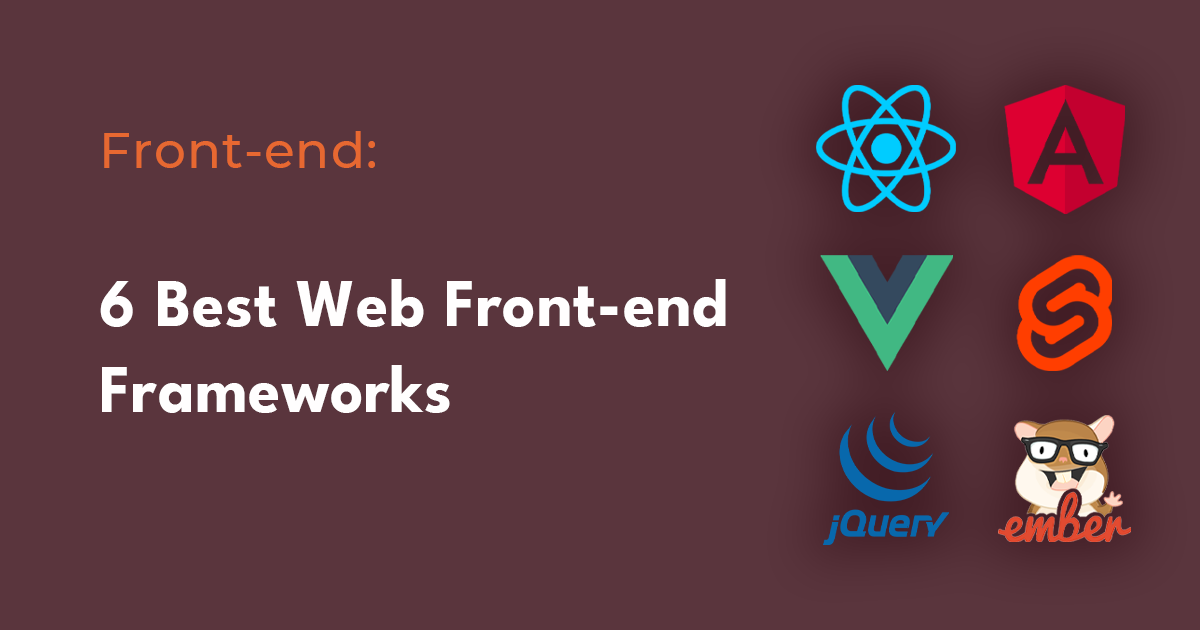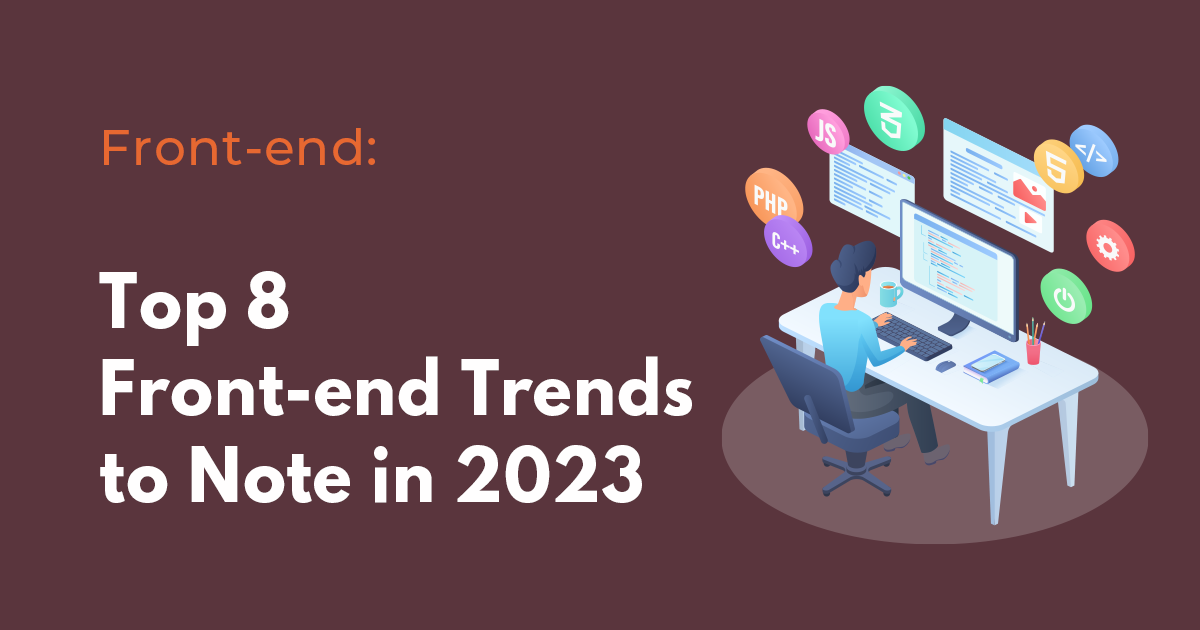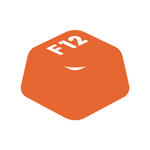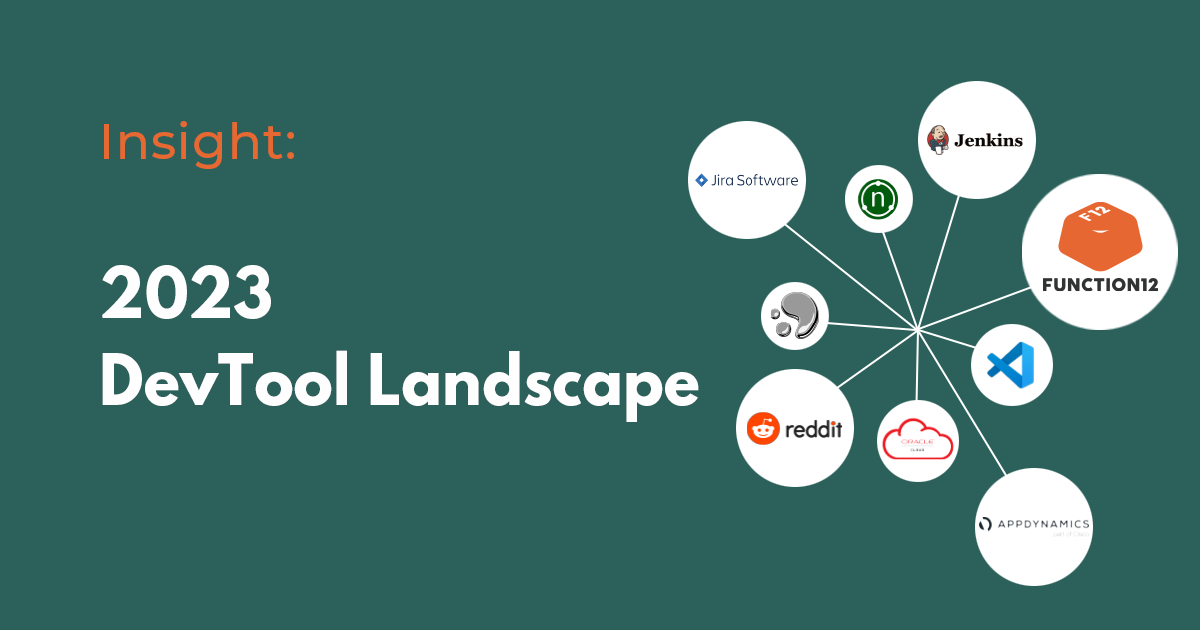As we enter the new year, many of us are setting resolutions to improve ourselves and our work. For front-end developers, staying up-to-date on the latest trends is essential to success. Especially, this became more important as the economy has not been good recently to the extent that many tech experts had been laid off in the last quarter. In 2023, there are a number of exciting developments to keep an eye on. In this article, we'll take a look at the top 5 front-end trends to note in 2023 and how they can help you build up your portfolio and catch the attention of hiring managers.
Jamstack
The term JAMstack, which originally stood for JavaScript, API, and Markup, is now widely used to refer to a web development infrastructure based on client-side JavaScript, reusable APIs, and prebuilt Markup. This is how Mathias Biilmann, CEO and co-founder of Netlify, defines it.
The combination of these three elements results in a simpler, faster, and cheaper experience for developers, and the architecture also makes websites more secure by eliminating the need for database or server protection. Additionally, JAMstack-based websites are scalable, meaning that if a project becomes popular, the content delivery network (CDN) can adapt accordingly.
Mobile-first Approach in Web Development
With most browsing now done on mobile devices, companies must pay attention to this approach. It is not only about developing a website that looks good on smartphones but creating a website that is responsive, meaning it looks good on mobile devices with different screen sizes. Responsive web design is one of the most important web development trends, the following rules can help achieve it:
- Emphasize vertical orientation over landscape orientation and design for touch-based interactions
- Implement meta viewport tags to help browsers adjust how pages are scaled
- Utilize different layout methods such as Grid, Multi-Column, or Flexbox to make layouts fit the viewport
- Use CSS queries to adjust the size of elements based on the capabilities of the device.
Headless Architecture for Content Management
Headless CMS is a type of content organization that gained popularity after Netflix adopted it. To understand it, let's compare it to a traditional (or coupled) CMS.
In a traditional CMS, all content such as images, videos, text, and code are stored together. This means the front-end and back-end are closely linked, making it difficult to update content.
As people consume information on multiple devices simultaneously, the content must look good on all devices, which is why headless architecture for content management is becoming more popular. This is not to say traditional CMS is bad, but rather that the way people consume content has changed, and so has web development.
The purpose of using a headless CMS is to make content delivery fast and easy, so that content creators do not need to work with code. In a headless CMS, the front-end and backend are separated, meaning they are two different systems, one for content creation and storage, and the other for presenting it. Once the content is created, the headless architecture uses an API to deliver the content and make it look good on any device.
We have created a comparison table that gives you an idea of the differences between headless and traditional CMS. It would be difficult to explain each criterion separately.
Here are a few examples of headless CMS solutions for different application areas:
- For e-commerce: commercetools is a headless commerce platform that allows businesses to manage their products, inventory, and orders through a set of APIs, while also providing a frontend framework that can be customized to match their brand and design.
- For media platform: Contentful is a headless CMS solution that provides a set of APIs for managing content, while also providing a frontend framework that can be customized to match the media platform's design and layout. It offers support for a wide range of media types, including text, images, videos, and audio.
Dark Mode
Many popular platforms like Facebook, Twitter, Instagram, Google, and Reddit have already implemented dark mode, and according to a survey of Polar users, 95% of them prefer dark mode over light mode even during daytime hours. This is because dark mode has several key advantages:
- It reduces the amount of blue light emitted by the screen.
- It can help save battery life on devices with OLED or AMOLED displays.
- It makes the user interface content more accessible and legible for all users.
- It can help limit the risk of eye strain, even in low-light conditions.
Hence, you must learn to script dark mode in the web or app project you are building. Below is an example of how to enable dark mode in HTML/CSS and Javascript.
<body>
<div class="container">
<button id="dark-mode-toggle">Toggle Dark Mode</button>
<p>Content goes here</p>
</div>
</body>
/* Default theme */
body {
background-color: white;
color: black;
}
/* Dark mode */
.dark-mode {
background-color: black;
color: white;
}
const toggle = document.getElementById("dark-mode-toggle");
const container = document.querySelector(".container");
toggle.addEventListener("click", () => {
container.classList.toggle("dark-mode");
});
In this example, the button with the ID "dark-mode-toggle" is used to toggle the "dark-mode" class on the "container" div when clicked. The default styles for the body and the "dark-mode" class styles are defined in the CSS. When the "dark-mode" class is added to the "container" div, it changes the background color and text color to create a dark mode effect.
Please note that this is just a basic example and you can customize it according to your needs.
Accelerated Mobile Pages
Statistics indicate that people are increasingly using smartphones and tablets over desktops. In 2019, 63.3% of all website visits came from mobile devices, and this number is expected to grow.
Accelerated mobile pages (AMP) is an open-source project developed by Google, which aims to speed up web pages for users on mobile devices. Google wrote in a blog post in 2016 that they want webpages with rich content such as video, animations, and graphics to work alongside smart ads and load instantaneously.
AMP uses a simplified version of HTML and a lightweight version of CSS to achieve this for "lightweight" mobile pages.
It's important to note that a desktop version, a mobile version, and an AMP version are all different versions of a website and cannot be replaced by one another.
Progressive Web Application Development
A progressive web app (PWA) is a website that functions like an app. PWAs are built using specific technologies and are delivered through the web. They are designed to work on any platform that uses a standards-compliant browser, whether it be a desktop computer or a tablet. PWAs have many capabilities similar to native apps, including:
- The ability to operate offline
- Access to hardware features such as the camera, microphone, or GPS
- Reliable installation for the owner and quick loading for visitors
To build a PWA, the tech stack consists of HTML, JS, and CSS. The technologies used include Service Worker, HTTPS, App Shell, Web App Manifest, and push notifications. According to Google, PWAs are fast, reliable, and engaging, loading instantly even on uncertain network conditions, responding quickly to user interactions, and providing an immersive user experience that feels like a natural app on the device. Tinder, Pinterest, YouTube Music, and Trivago Hotel Booking have developed their apps in this manner, and this trend is likely to continue in 2023.
Trending Web Development Programming Languages
JavaScript and Python are the most popular programming languages for front-end and back-end development. Some of the notable development language trends expected in 2023 are as the following:
- Express.js: a free, open-source web application framework for Node.js that helps build beautiful web applications quickly and easily.
- Nest.js: a framework inspired by Angular and widely used for web application design with a particular benefit in scalability.
- Next.js: a framework that allows Yellow Systems to deliver highly scalable, data-intensive, real-time backend services for fast, responsive websites and apps.
- Nuxt.js: A framework inspired by Next.js and React.js, and is a great way to manage complicated aspects such as asynchronous data, middleware, and routing. It is also extremely helpful if SEO is a must for the design of a website because Nuxt.js optimization makes it easy to generate a number of SEO-friendly HTML pages.
Low Code Development
One of the trends that stands out in the web development field after the pandemic is low-code development. Low-code development refers to developing applications or business logic with minimal programming, which allows even novice developers with little IT or programming experience to quickly create the necessary functionality.
While low-code development is not yet threatening the role of traditional developers, it is undeniable that the trend is moving towards low-code (or no-code) development. According to Gartner, a US research company, by 2024, about 65% of all application development projects will be developed through low-code platforms. This trend is not insignificant for developers, and it is expected that the way developers work will also change gradually in the coming years.
FUNCTION12 is not a low-code development tool, but it is a solution that can boost the productivity of developers, especially in the area of UI view coding. You may consider try use this design-to-code tool and get ready for the new year.
Final Words
Overall, 2023 is set to be an exciting year for front-end development, with a number of new trends emerging that developers should be aware of. By staying up-to-date on these trends, front-end developers can build a strong portfolio and stand out to hiring managers in a competitive job market. Whether it's through the implementation of design principles like dark mode or applying relevant new technologies such as headless CMS and low code development, there are many ways to stay ahead of the curve in 2023.
Related Posts









